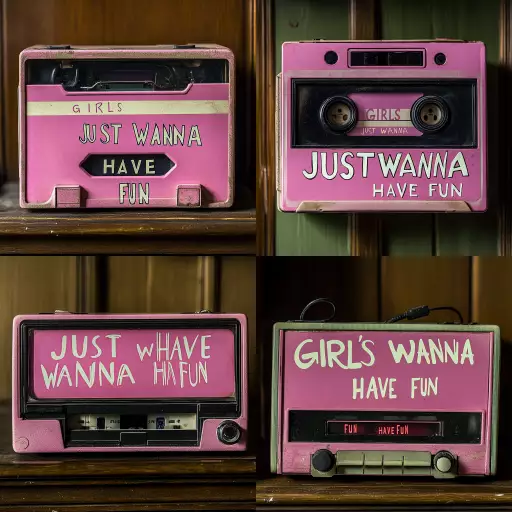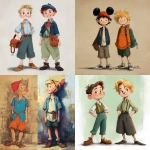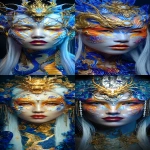Explore the Best AI Image Gallery

The Algorithmic Palette: Navigating the Ethics of AI-Generated Media
Artificial intelligence (AI) is rapidly transforming numerous facets of our lives, and the creative industry is no exception. From generating captivating music compositions to crafting stunning visual art, AI-powered tools are pushing the boundaries of whats possible, blurring the lines between human and machine creativity. This burgeoning field, however, presents a complex landscape of ethical considerations that demand careful scrutiny and thoughtful discussion.
The Transformative Potential of AI-Generated Media
The potential applications of AI in media creation are vast and varied.
- Music Composition: AI algorithms can analyze existing musical pieces to learn patterns and structures, enabling them to compose original melodies, harmonies, and even entire songs in diverse genres.
- Visual Arts: Generative adversarial networks (GANs) are capable of creating stunningly realistic images, paintings, and artwork in various styles.
- Film and Animation: AI can assist in tasks such as character animation, scene generation, and special effects, streamlining the filmmaking process and opening up new creative possibilities.
- Writing: AI-powered writing assistants can help authors overcome writers block, generate story ideas, and even draft entire narratives.
These advancements have the potential to democratize creative tools, making them more accessible to individuals without formal training or resources. AI can also serve as a powerful collaborative partner, augmenting human creativity and pushing the boundaries of artistic expression.
Ethical Considerations: A Delicate Balance
While the potential benefits are undeniable, the rise of AI-generated media raises several ethical concerns that require careful consideration:
- Authorship and Copyright: Who owns the copyright to AI-generated works? Is it the creator of the AI algorithm, the user who provides input, or the AI itself? Establishing clear legal frameworks for ownership and intellectual property rights is crucial.
- Bias and Representation: AI algorithms are trained on massive datasets, which can contain inherent biases that reflect societal prejudices. This can result in AI-generated media perpetuating stereotypes and discrimination.
- Misinformation and Deepfakes: The ability to create highly realistic synthetic media raises concerns about the spread of misinformation and the potential for malicious use, such as creating convincing deepfakes for propaganda or impersonation.
- Job Displacement: AI-powered tools may automate certain creative tasks, leading to concerns about job displacement in industries such as writing, design, and music production.
Addressing these ethical challenges requires a multi-faceted approach involving collaboration between policymakers, technologists, artists, and the general public.
Shaping the Future: Responsible Innovation
As AI continues to evolve, it is essential to prioritize responsible innovation in the realm of media creation. This involves:
- Transparency and Explainability: Developing AI algorithms that are more transparent and understandable can help mitigate biases and build trust.
- Diversity and Inclusion: Ensuring that the datasets used to train AI models are diverse and representative can help reduce bias and promote inclusivity in AI-generated media.
- Education and Awareness: Raising public awareness about the capabilities and limitations of AI, as well as the ethical considerations involved, is crucial for informed decision-making.
- **Regulation and Policy:** Establishing clear guidelines and regulations for the development and use of AI in media creation can help address concerns about copyright, misinformation, and job displacement.
The future of AI-generated media holds immense promise. By embracing a framework of ethical responsibility, we can harness its transformative power to enrich our creative landscape while mitigating potential harm.



](https://images.ai-img.art/thumbnails/150/269414b0e541026702e9e67c67602c96162f37ff460a388b3b36314c8fc936dd.webp)









](https://images.ai-img.art/thumbnails/150/2fbd98ecfc425cfc1597779121e1c0305437067779e9c471eb64ff9615d5be98.webp)



](https://images.ai-img.art/thumbnails/150/3020b8c2b6d9be07e042357107af1de10deb274a41d2b0f332684ad4b532a702.webp)








](https://images.ai-img.art/thumbnails/150/8d1fe5a7a49cfc96747182431a853357913286d89258383caab2d3b4681afcb5.webp)


](https://images.ai-img.art/thumbnails/150/5197af8969d850e2a43e141d41e482ccbceedebceb2a4caf9f098f943f9d1b0f.webp)
](https://images.ai-img.art/thumbnails/150/485c8b1c747827bdc9a962f8a1919b3c259b18dd263b260208a1eae19fb85e07.webp)


















